Nowruz (pronounced no-Rooz) is a combination of two Persian words. The first word now means new, and the second word Ruz, means day together they mean “New Day.” Nowruz is the name for the celebrations that observe the New Year for many Persian and Central Asian communities. The exact beginning of the New Year occurs when the season changes from winter to spring on the vernal equinox, which usually happens on 20 or 21 March each year. The spelling of Nowruz in English can take many forms, including Noroz, Norouz, Nowruz, and Norooz. For this resource, we have used the spelling Nowruz.

The festivities of Nowruz reflect the renewal of the Earth that occurs with the coming of spring. Nowruz is a festival that has been celebrated for thousands of years. It is a holiday that is enjoyed by people of several different faiths. Nowruz is partly rooted in the religious tradition of Zoroastrianism. Among other ideas, Zoroastrianism emphasizes broad concepts such as the corresponding work of good and evil in the world and the connection of humans to nature. Zoroastrian practices were dominant for much of the history of ancient Persia (centered in what is now Iran). Today there are a few Zoroastrian communities throughout the world, and the largest is in southern Iran and India.
People all over the world celebrate Nowruz, but it originated in the geographical area called Persia in the Middle East and Central Asia. The distinct culture based on the language, food, music, and leisure activities that developed among the many people and ethnic groups who lived in this area is known as Persian. Nowruz became a popular celebration among the communities that grew from these Persian-influenced cultural areas.
The traditions of Nowruz are strong among people in Iran, Afghanistan, Iraq, Tajikistan, Uzbekistan, Azerbaijan, India, Pakistan, Turkey, Canada, and the United States. Nowruz is a holiday that is celebrated by people from diverse ethnic communities and religious backgrounds. For the Parsi community, however, Nowruz is very special and is known as their spiritual New Year.
- Rituals and Traditions
Nowruz is a time for family and friends to gather and celebrate the end of one year and the beginning of the next. Children have a fourteen-day vacation from school, and most adults do not work during the Nowruz festivities. Throughout the holiday period, friends and family gather at each other’s houses for meals and conversation. Preparing for Nowruz starts a few weeks before the New Year with a traditional spring cleaning of the home. At this time, it is also customary to purchase new clothing and new furniture for the home.
- Chahar Shanbeh Soori: The Fire Jumping Traditions
On the night of the last Wednesday of the old year Chahar Shanbe Suri, in Persian, is celebrated. During the night of Chahar Shanbe Suri people traditionally gather and light small bonfires in the streets and jump over the flames shouting: “Zardie man az to, sorkhie to az man” in Persian, which means, “May my sickly pallor be yours, and your red glow is mine.” With this phrase, the flames symbolically take away all of the unpleasant things that happened in the past year. Because jumping over a fire is dangerous, many people today light the bonfire and shout the specific phrase without getting too close to the flames.
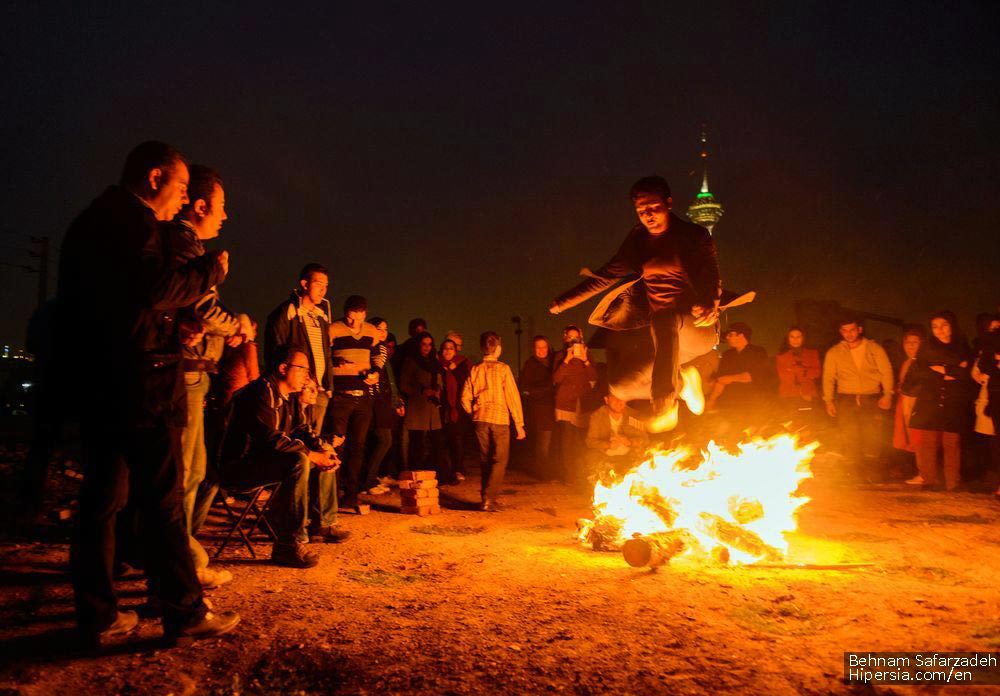
- Sal Tahvil: The Exact Moment of the New Year
Families return home after the events of Chahar Shanbeh Soori, and wait together for the exact moment when the vernal equinox occurs, in Persian called Tahvil. Today people know the moment of Tahvil through searching on the Internet or looking in the newspaper. However, before these sources of information were available, families knew that the New Year was close when a specific person called Haji Firooz, came to the neighborhood to sing, dance, and spread the news of Nowruz. Haji Firooz is usually dressed in a red satin outfit with his/her face painted as a disguise.
When the New Year is just minutes away, families and friends gather together and wait for Tahvil to occur. Right after the moment of Nowruz, the family exchanges well-wishes such as “Happy New Year” or “Sal-e No Mobarak!” in Persian. Next, the eldest in the family distributes sweets and candies to everyone, and young children are given coins as presents. It is also traditional for families and neighbors to visit each other and exchange gifts.
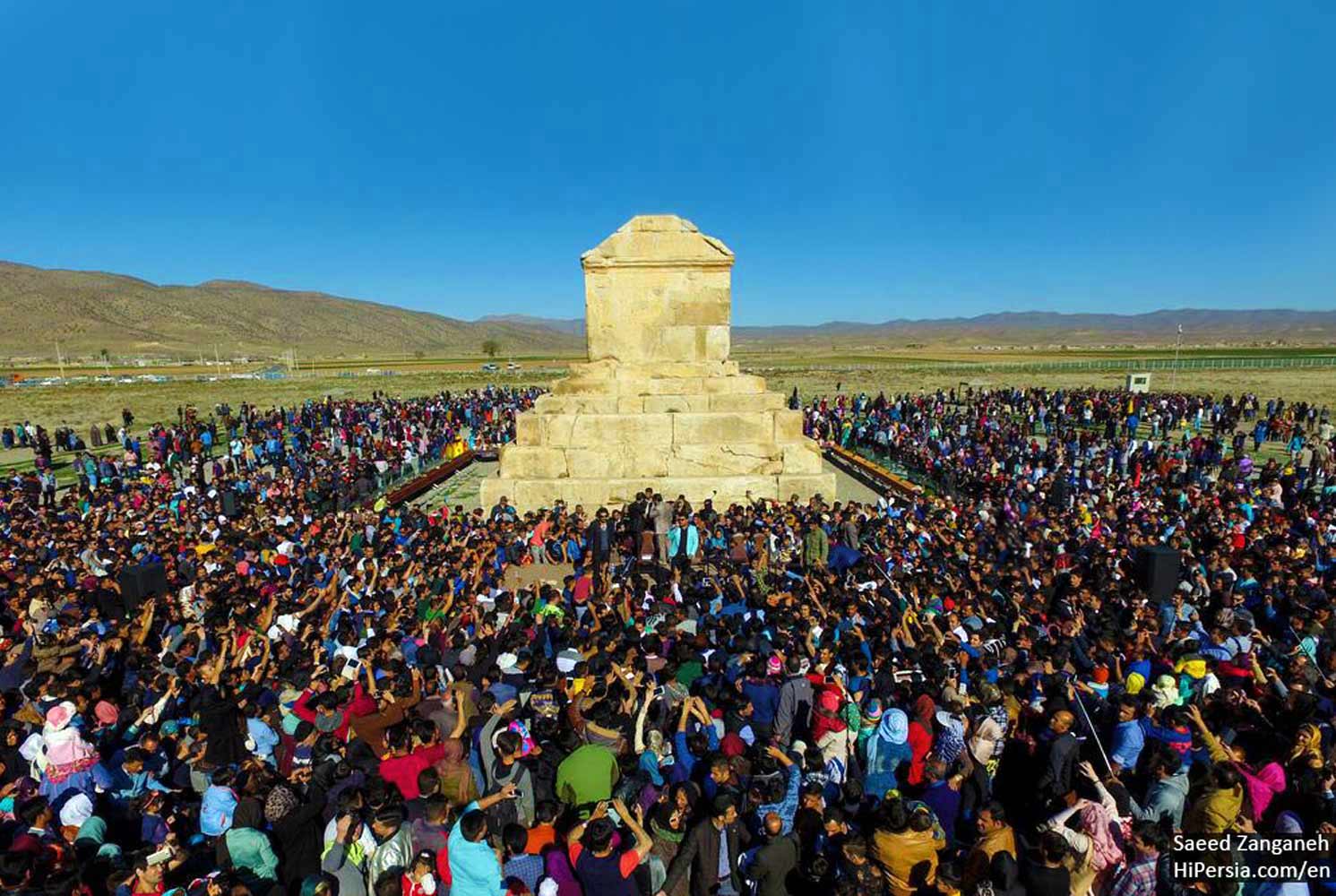
- Haft-sin Table: The Table of Seven S’s
The most significant activity in the celebration of Nowruz is making the Haft-sin table. Haft is the Persian word for the number seven and seen is the Persian word for the letter S. The Haft-sin table means a “table of seven things that start with the letter S’. Creating the Haft-sin table is a family activity that begins by spreading a special family cloth on the table. Next, the table is set with the seven S items. Here are some of the parts and what they symbolize:
Sumac (crushed spice of berries): For the sunrise and the spice of life
Senjed (sweet dry fruit of the lotus tree): For love and affection
Serkeh (vinegar): For patience and age
Seeb (apples): For health and beauty
Sir (garlic): For good health
Samanu (wheat pudding): For fertility and the sweetness of life
Sabzeh (sprouted wheat grass): For rebirth and renewal of nature
Next to these S items, other symbolic objects go on the Haft-sin table, depending on the belief of each family. It is customary to place a mirror on the table to symbolize reflection on the past year, an orange in a bowl of water to symbolize the Earth, a bowl of real goldfish to symbolize new life, colored eggs to express fertility, coins for prosperity in the New Year, flowers called hyacinths to symbolize spring, and candles to radiate light and happiness. Each family places other items on the table that are special, for example, the Qur’an, the holy book of Islam, or the Shahnameh, an epic Persian story of colorful kings and princes written around the year 1000 CE.
Another major item to place on the Haft-sin table is a book of poetry by the famous poet Hafez. Hafez lived in Persian lands during the 14th Century CE and wrote many volumes of poetry and prose narratives. Many Persians consider Hafez to be their national poet, and his historical status is similar to the importance of Shakespeare in the English-speaking world.
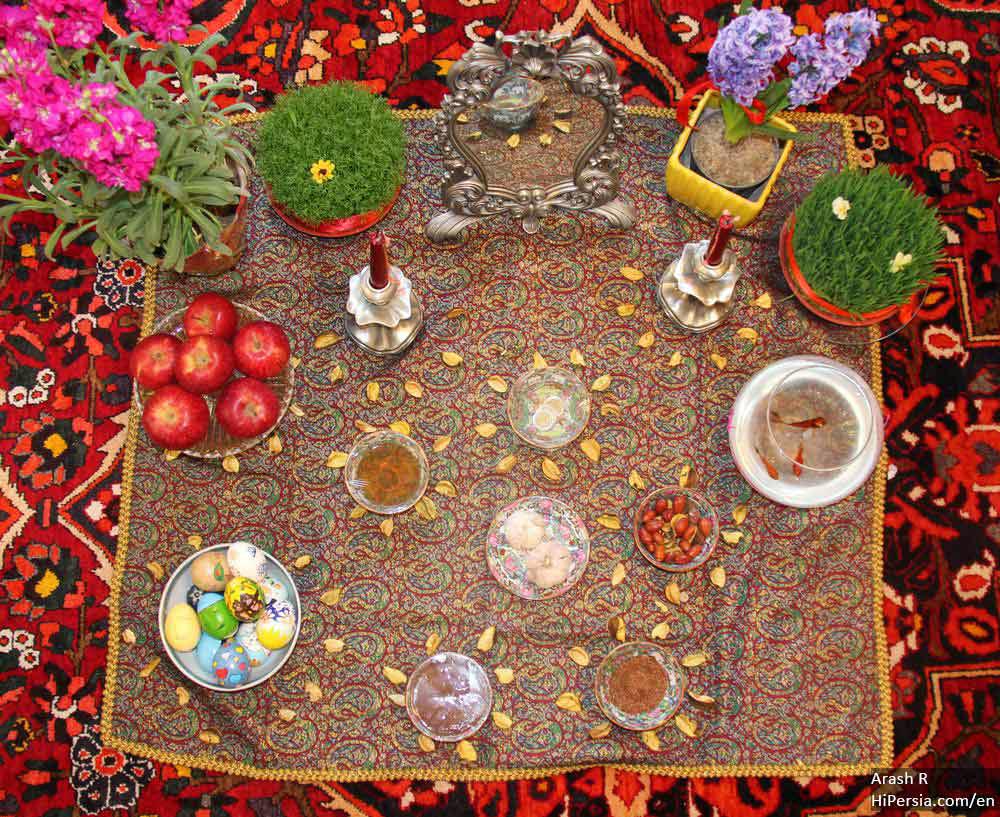
- Special Foods of Nowruz
Just like other cultural celebrations, many special foods are prepared during Nowruz, depending on the country of origin. One of these dishes, Ash reshteh or noodle soup, is typically served on the first day of Nowruz. This soup is unique because the knots of noodles symbolize the many possibilities in one’s life, and it is thought that untangling the noodles will bring good fortune. Another Nowruz dish is called Sabzi Polo Mahi (fish served with special rice mixed with green herbs). Sabzi polo is a combination of rice, several green herbs, and spices that represent the greenness of nature in spring. Particular sweets are also served during Nowruz. Traditional items include Rice bread or Nane Berenji Rice bread (cookies made from rice flour); baklava (flaky pastry sweetened with rosewater); samanu (sprouted wheat pudding); and Noghl (sugar-coated almonds).
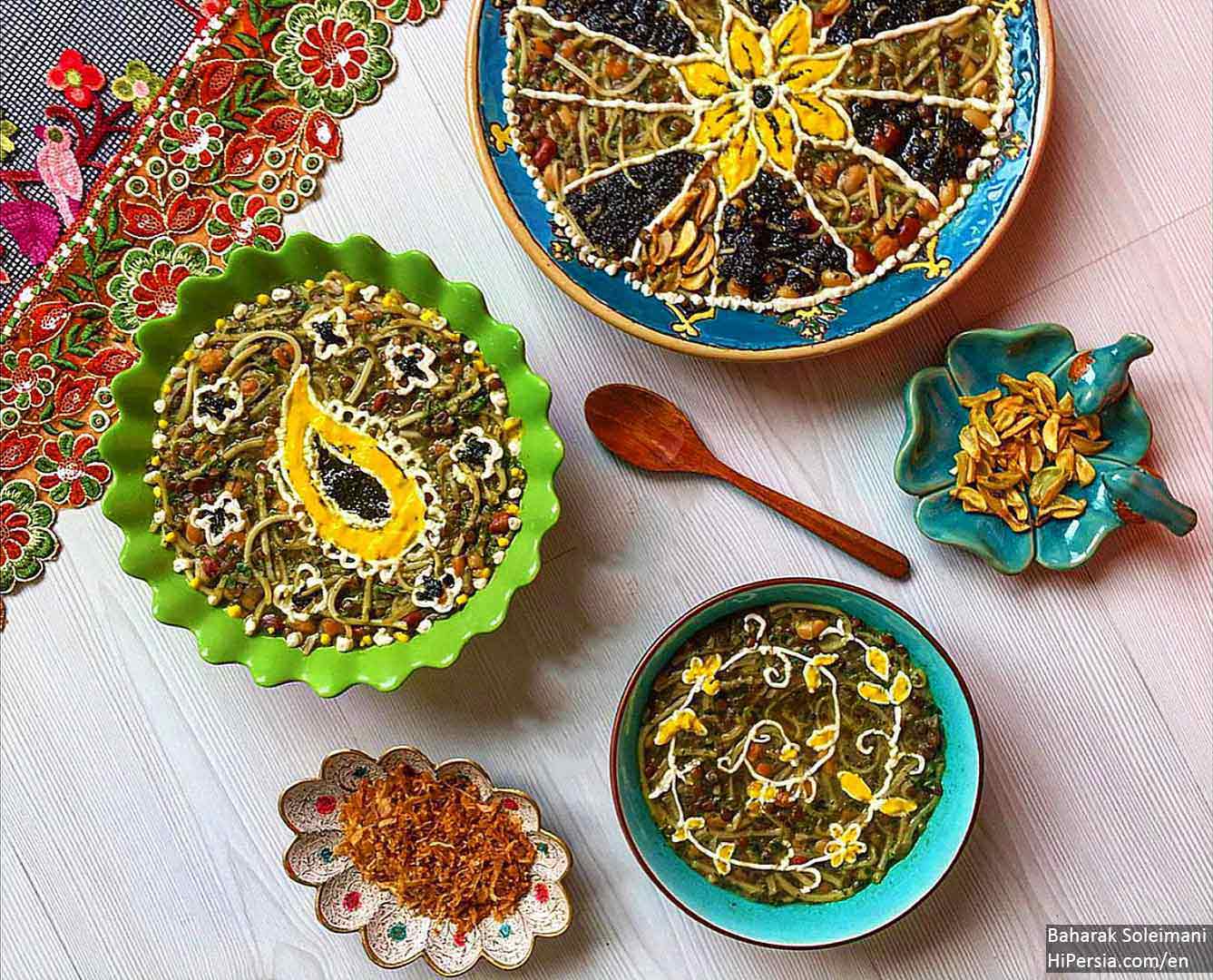
- The Final Day of Nowruz: Sizdeh Bedar
The haft-seen table remains in the family home for thirteen days after the beginning of Nowruz. The thirteenth day is called Sizdeh Bedar, which literally means in Persian, “getting rid of the thirteenth.” The celebrations that take place on Sizdeh Bedar are just as festive as those on the first day of Nowruz. On this day, families pack a special picnic and go to the park to enjoy food, sing, and dancing with other families. It is customary to bring new sprouts, or Sabzeh, grown especially for this occasion. Sabzeh is thrown on the ground or in a river to express the return of the plant to nature. Sizdah Be-dar marks the end of the Nowruz celebrations, and the next day children return to school, and adults return to their jobs.
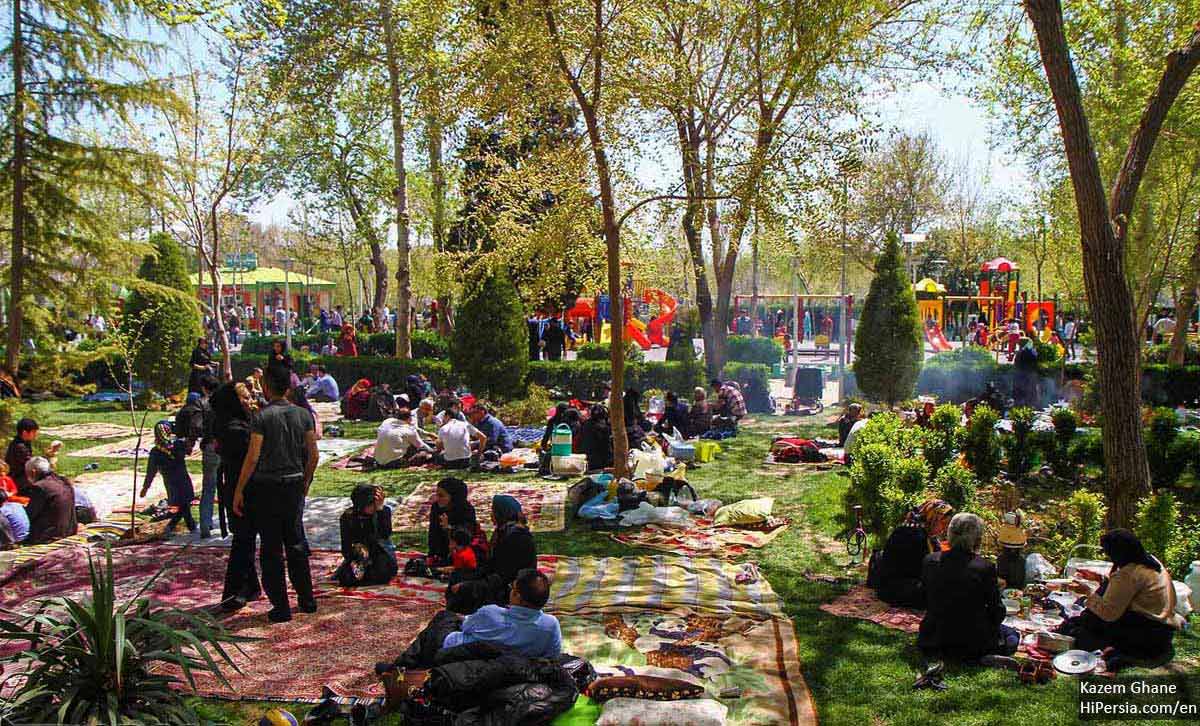
 English
English
 فارسی
فارسی 








